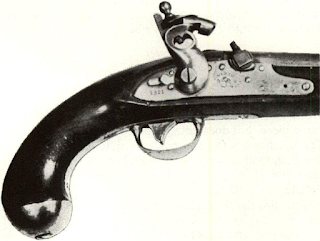At the time this arm was discovered, it was assumed
In responding, “Yes, it fits on the guard like this
The barrel is exactly 40 inches long, the rear steel
Forward of the hammer the mark: /tower is
All the lock parts are straw colored. File finishing is
In relocating, the screw now passes across the line
The snapcap of Enfield form was attached to the
While these minute details may seem redundant, they
Another Ml851 Navy Colt is the same period of
It is not wise to generalize too much on the samples
It is perhaps hardly worth commenting that the
In responding, “Yes, it fits on the guard like this
The barrel is exactly 40 inches long, the rear steel
Forward of the hammer the mark: /tower is
All the lock parts are straw colored. File finishing is
In relocating, the screw now passes across the line
The snapcap of Enfield form was attached to the
While these minute details may seem redundant, they
Another Ml851 Navy Colt is the same period of
It is not wise to generalize too much on the samples
It is perhaps hardly worth commenting that the

Comments
Post a Comment